Let’s Build Around Light Rail
The title of this post is from the title for an upcoming luncheon: CMT’s Let’s Build Around Light Rail Luncheon to be held May 8th (ticket deadline April 26th). Guest speaker Katherine Perez is billed as a “national Transit Oriented Development Expert.” Awesome!
When I saw the invitation it got me thinking; “How are we doing at building around light rail?” The original line of our St. Louis MetroLink opened on July 31, 1994 1993, almost 18 19 years ago. I decided to visit two of those original stations that had the most opportunity for new development: Wellston & Rock Road.
Wellston Station
The Wellston Station is located in the very poor St. Louis County municipality of Wellston:
Wellston was incorporated as a city in 1909; due to “government difficulties” the city was dissolved three years later, only to be reestablished in 1949. The city was named for Erastus Wells.
During the early 1900s, the Wagner Electric Company, a manufacturer of small motors for appliances and transformers, began development along Plymouth Avenue in Wellston, growing to occupy the entire block and providing 4,500 jobs during World War I. North of the Wagner site, ABEX Corporation built a steel foundry that began operation in 1923.
In 1982 ABEX moved out of its Wellston location; the next year, the Wagner Electric Company closed its doors. After closure, it took 22 years, and millions of dollars in tax credits and development grants, for the St. Louis County Economic Council to demolish five buildings and clean up 15 acres (6.1 ha) of the Wagner brownfield land along the MetroLink so that it could be made marketable as the Plymouth Industrial Park. (Wikipedia)
An industrial park isn’t the most vibrant idea around transit but when you try to develop formerly toxic industrial land your options are limited, housing isn’t possible. So how’s that going around the Wellston Station? (Aerial)
The station itself isn’t much, two platforms and “243 park and ride spaces” (Source). That’s a lot of parking!
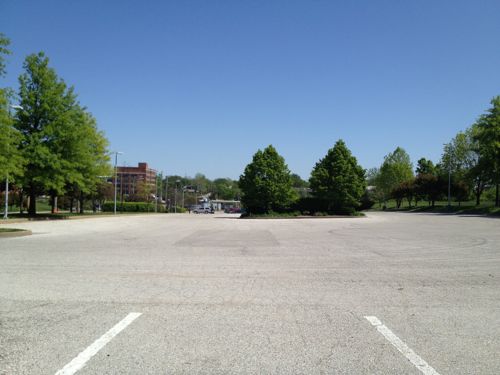
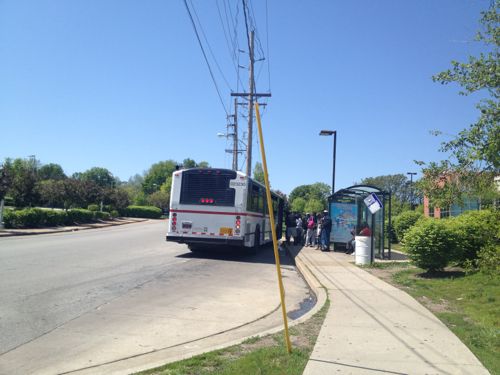
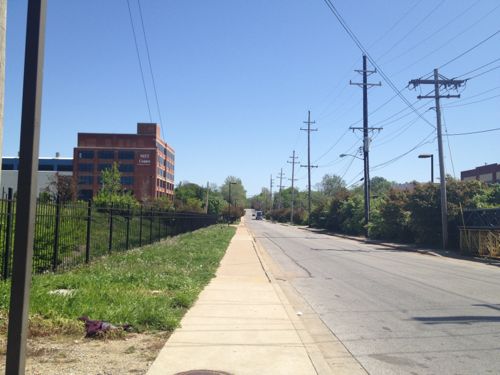
In 1994 the Metropolitan Education and Training Center opened in an existing building east of the MetroLink line at 6347 Plymouth Ave:
The MET Center is a strategic partnership created to stimulate the economic self-sufficiency of individuals living in low-income communities of the St. Louis region. The Center seeks to accomplish this mission by delivering focused, comprehensive, and accessible job training, placement, assessment, career development services and transportation services. We serve the underemployed, unemployed, and displaced workers, leading to sustainable work and a competitive regional economy. (MET Center)
Great, how do I get there? Their website says it’s “Centrally Located Near the Metro Link” but under location they offer a link to Metro’s Trip Finder but mostly they give driving directions. Wow, major TOD fail. But the low-income customers they serve know how to find MET.
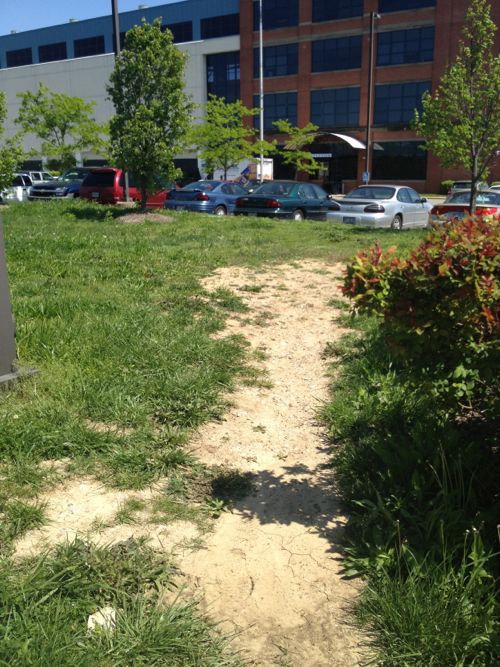
So the MET Center failed to grasp the idea of orienting to transit, how about the industrial park?
In order to obtain the state’s oversight and participate in the Missouri Department of Economic Development’s Brownfield Tax Credit program, the St. Louis County Economic Council enrolled the site in Missouri’s Voluntary Cleanup Program in 1997. The tax credits were sold to Ameren Corp. and Allegiant Bank, which earned the project $3.5 million. The site was also funded in part with $1.9 million by an Economic Development Administration grant for remediation and infrastructure and a County Industrial Development Authority loan. (2005 St. Louis Business Journal story)
Big bucks, must be great
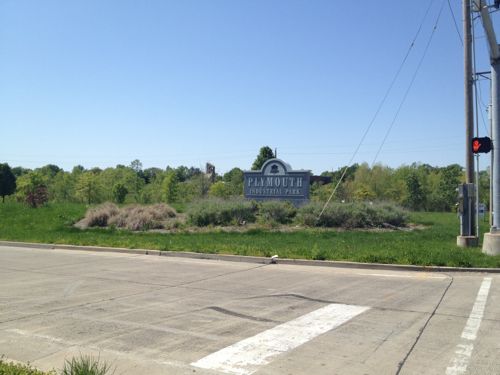
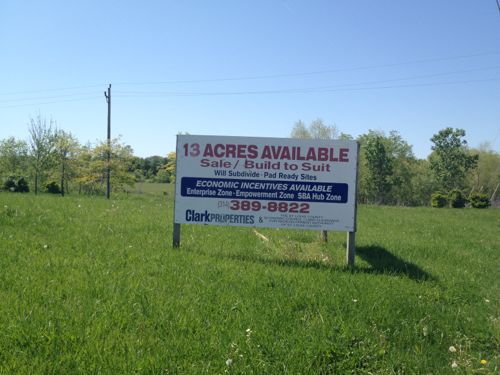
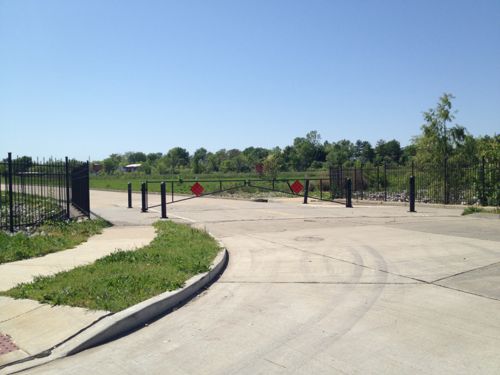
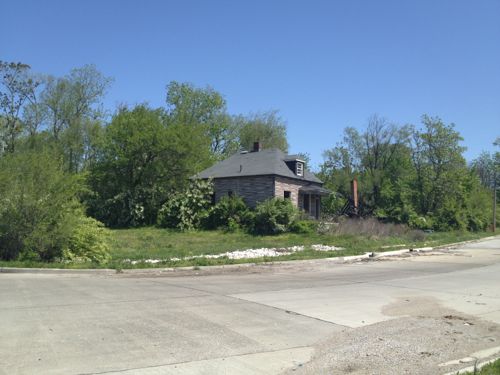
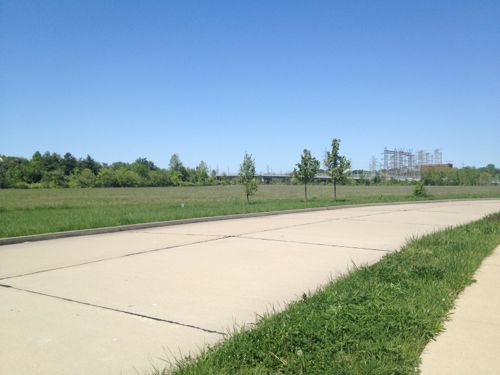
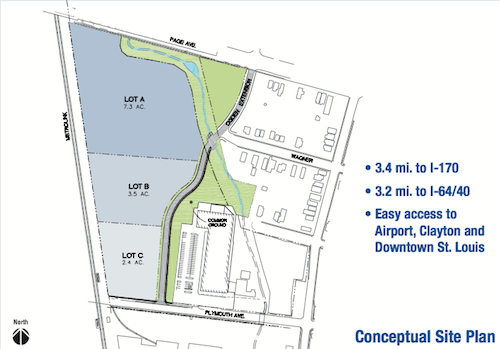
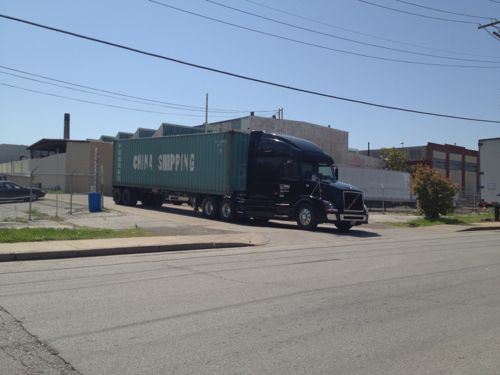
So not much east of the Wellston MetroLink Station, let’s go west and see if that nearly vacant park and ride lot has spurred development.
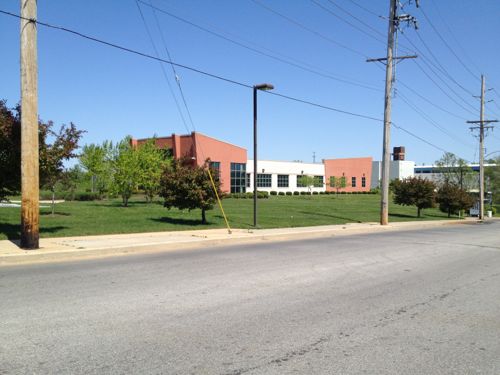
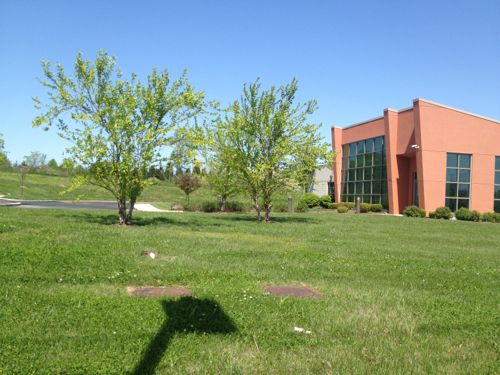
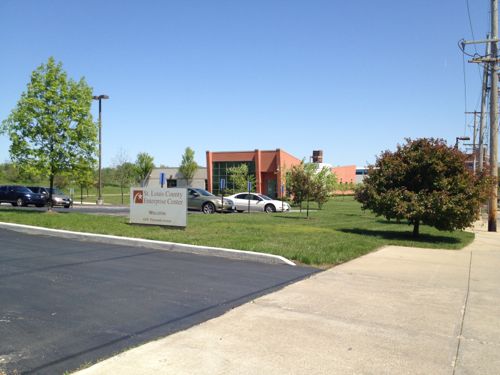
What is the St. Louis County Enterprise Center?
St. Louis Enterprise Centers Wellston is a 10,000-square-foot business incubator situated on two acres within the City of Wellston. It features office and warehouse space and is located within close proximity to a MetroLink light rail station and Metropolitan Education and Training (MET) Center, a workforce training facility. (St. Louis County Economic Council).
Close Proximity?
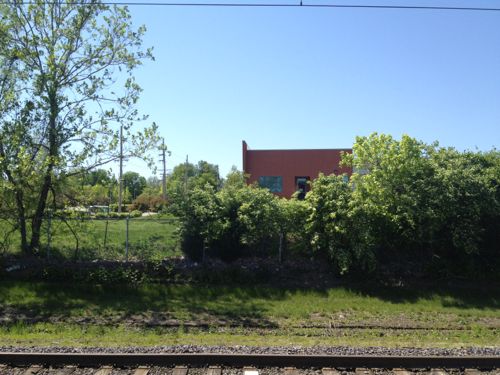
It couldn’t be any closer and not get hit by the train! Yet the building design and site planning totally ignore the bus line and light rail station. Complete TOD failure.
Sure, sidewalk cafes along Plymouth Ave next to bustling retail stores is probably too much to ask but what has been planned and built is all wrong. The failure here is not a result is the economic plight of this municipality, the failure is in the poor solutions that were supposed to empower local residents. Hopefully Rock Road Station is better, let’s get on the train and go one station north.
Rock Road Station
Unlike the Wellston Station, the Rock Road Station isn’t just a few steps from the road. (aerial)
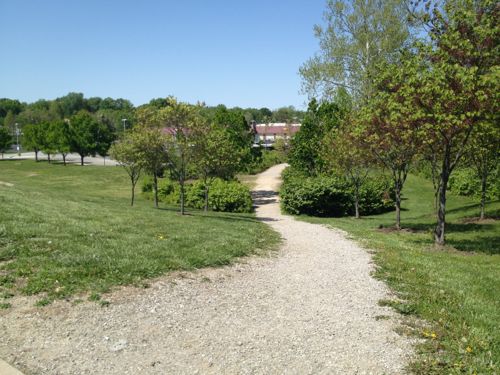
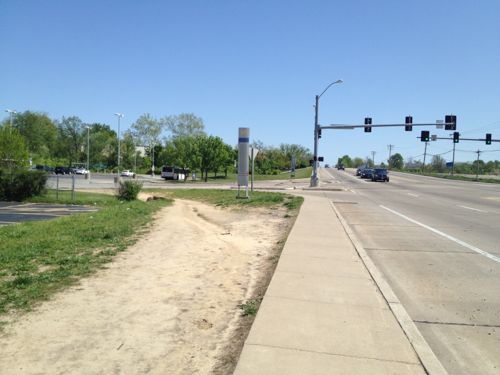
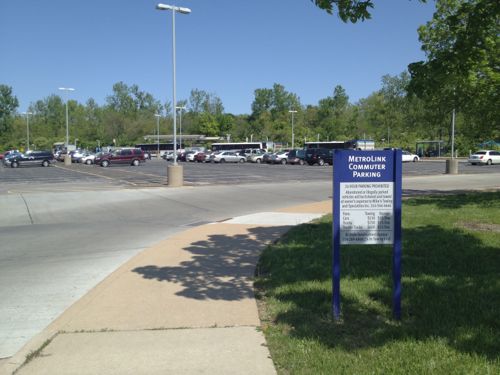
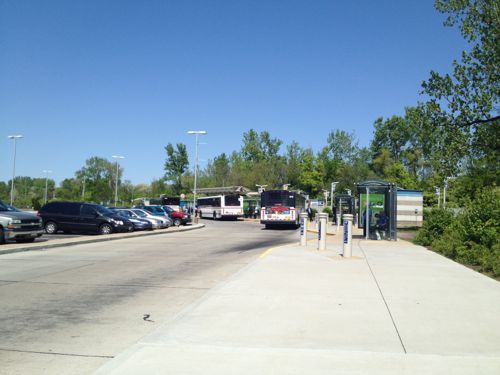
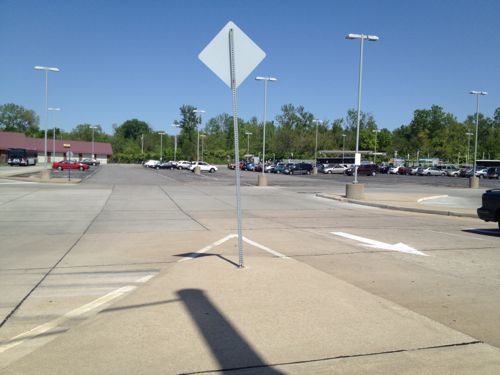
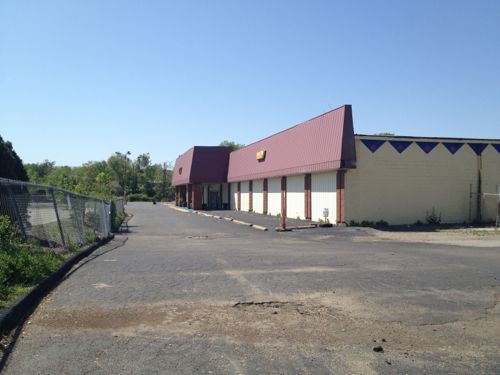
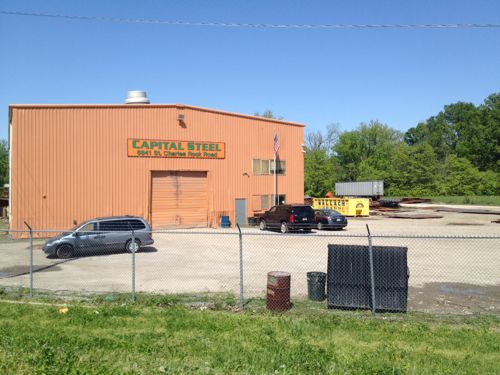
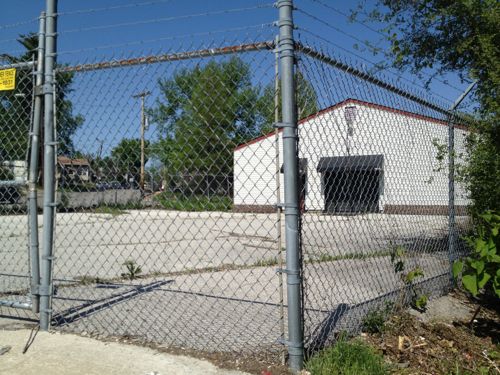
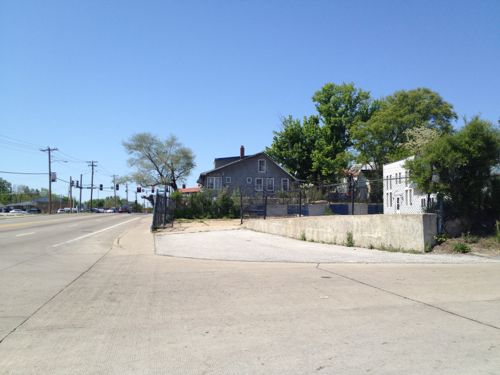
Geez, the Rock Road Station makes the Wellston Station seen like a TOD paradise. Hopefully Ms. Perez can address these failures and suggest ways make development happen here.
– Steve Patterson
First, I agree with all your observations. Second, I appreciated the Freudian slip when it came to the “Flee Market”. But third, due to the economic malaise that is emblematic of the continuing discrimination toward both north city and north county, I’m not surprised that the only new development, transit oriented or not, is “economic incubators”, “flea markets”, bus transfer facilities and optomistic (but unoccupied) “industrial parks”. Sure, transit offers an additional amenity to any tenant (industrial, commercial or residential), but you gotta want to be there in the first place, and there are many, many other better choices in the region, including sites adjacent to Metrolink. The cost of land, while I’m sure it is, pardon the pun, dirt cheap at both of these stations, is only one part of the equation.
True but in nearly20 years you’d think the situation would have changed, The Wellston Station is just one stop north of the Delmar (Loop) Station.
One stop and a world apart, in too many people’s perceptions, especially locals.
Why did Express Scripts and Mastercard both choose to locate eleswhere, but not all that far away? Even after Metrolink was up and operating? I’d argue better freeway access and a perception of less crime / increased employee safety. Throw in some tax incentives, and it’s hard to make the case that either Wellston or the Rock Road stations would have made equal or better sense, from a business standpoint.
Steve thank you for bringing up this topic. TOD is the way to go. Unfortunately there’s a combination of laziness and racism/classism preventing this in St. Louis. I think most of the “city planners” in these municipalities are comatose or think that public transportation is just a poor and or black thing. The important thing to them is that the good people commuters (those who have cars and drive to the park-and-ride lots) have plenty of access to parking. To them, the only people who would walk are the scum of society and not worth worrying about. They are stuck in the past and this stupidity on their part will cause North County to miss out on an opportunity for halting its steady decline. Exploiting this transit-oriented corridor by zoning for and encouraging mixed used development around the stations will be a boost for the area and will actually attract and retain middle class people who are fleeing the area.
Steve, MetroLink opened July 31,1993.
Thanks Tom, I knew that but I guess I got confused with the MET Center year.
TOD is great in theory. The problem I see in STL is that Metro LRT track was laid not by how it might best serve the community but rather by how cheap and easy the right of way could be purchased. As such much of the train’s route parallels parks, airports, industrial parks and rail yards…hardly hot beds of ridership or locations suitable for extensive TOD. If a few extra billion had been spent at the get-go for higher ridership/smarter routes I think we would see more/better/vibrant TOD.
MetroLink’s poorly chosen path can be seen easily by it’s daily ridership numbers. Even though MetroLink connects 2 downtowns, an airport and a Military Base many other North American cities with similar rolling stock have vastly higher daily ridership despite much smaller metro populations, less track and no airport connection (see Edmonton and Calgary).
Edmonton and Calgary are also growing cities and metros.
Growing yes but millions less in potential riders…..
Or we could spend the “few extra billions” right now on half a dozen new LRT+streetcar lines in addition to the existing ones. That would have a much greater bang for the buck. Although the whole question is theoretical since for political reasons the extra billions just don’t exist.
St Louis actually has quite high ridership compared to average North American LRT systems. Edmonton and Calgary are outliers, and LRT is so successful there because there are no freeways in downtown. St Louis LRT is actually held in rather high esteem nationwide because it connects so many job centers – downtown, hospitals, Wash U, Clayton, etc. which is why it is relatively successful.
Where are your statistics? Here are mine: http://www.metro-magazine.com/resources/Images/MET06-TopRail-storychart.pdf
Number of rail vehicles Annual ridership (on rail)
St. Louis 87 19.0 million
Denver 138 19.7 million
Edmonton 74 20.0 million
Dallas 153 21.6 million
Portland 127 38.5 million
San Diego 134 40.0 million
Atlanta 338 83.3 million
Calgary 153 83.8 million
Vancouver 335 76.2 million
Philadelphia 885 150.0 million
Toronto 1025 250.0 million
Boston 669 265.0 million
I know we all want to think that St. Louis is doing great things, but while Metrolink was a leader in bringing rail transit back when it opened two decades ago, it’s being surpassed by both newer systems and by ongoing reinvestments in existing systems (we’re #40 out of 50 in current investments). But what’s also interesting in these stats is that there is no correlation between number of vehicles and annual ridership. This can probably be explained by differences in types of trips (long versus short), service areas (large vs. small, dense vs. suburban) and how crowded the vehicles are . . . .
Your list mixes light and heavy rail, small and large cities, and dense and non-dense urban areas. Thus it is not too informative.
http://en.wikipedia.org/wiki/Light_rail_in_North_America
Most of the cities above us on this list are much larger than us, or have inferior car transport to job centers (Edmonton, Calgary, Newark). Our peer cities are further down the list.
The St. Louis, Denver and Portland areas are comparable in size, but I agree that the others aren’t truly comparable. The bigger question is why we’re focusing only on the rail component of public transit?! The vast majority of trips on any transit SYSTEM are by bus, and the real indicator of the acceptance / success of any system is total ridership, as a portion of total commuter trips. If you want to see those numbers, I’d check out the map associated with http://www.governing.com/blogs/by-the-numbers/bicycle-commuter-data-for-american-cities.html
Sure, STL LRT does connect Job centers, but it doesn’t connect those job centers to anything. I think that is it’s biggest problem and it’s ridership statistics (population v/s track v/s ridership) are the pits as a result. I agree that interconnecting street car lines would be a huge plus. Adding penetration into residential areas would be wonderful.Places like EDM and CYG don’t have restricted access highways downtown, somewhat by choice, and also given the vastly smaller populations (compared to the STL), they don’t need them either. Ultimately Canada didn’t invest in the automobile the same way the USA did. Save for a few stretches in ONT there are no end to end restricted access highways in that country. EDM and CYG might not connect to the airport or near by Armed Forces bases but they do a mix of downtown, University and residential which produces results that MetroLink could learn from.Ultimately I think that is STL’s problem….the roads are not clogged and parking downtown is cheap and plentiful. Combine that with a seemingly “path of least resistance” track layout, slow system expansion and you have a uphill battle on your hands by creating the false impression that the need isn’t there.
It connects job centers to the few areas of dense housing (downtown lofts, downtown Clayton, universities, etc.) in the metro area, and to some other neighborhoods (like Shrewsbury). The other 90% of the area is low density housing, you could extend MetroLink to there (like they did in Illinois) but few people would take it.
There really are few MetroLink extensions that would be worth it. Shrewsbury to South County (cheap, the tracks are already there), maybe Clayton-Westport (another big job center). Beyond that, all that should be build is street running light rail (with separate lanes, signal priority, relatively infrequent stops so it’s actually faster than walking!) on city corridors like Chippewa, Gravois, Natural Bridge, Grand, Washington.
If we bulldoze all the freeways downtown we will quickly get ridership like Calgary’s. That seems unlikely to happen though.
we should be more worried about development around 8th and pine than two crappy suburban stations where smart urban growth doesnt even make sense. plus the rockroad services frison indoor, possibly the best thing in north county.
8th & Pine was developed before MetroLink. Yes, renovation of the vacant Arcade-Wright building needs to happen but otherwise that station is pretty determined.
i couldnt agree more about the arcade wright building, there is another mostly abandoned building catty corner from that. then look at locust between 9th and 10th, almost totally abandoned. they area has the density of design to work well with public transit. maybe I should say re-development; but still about 1000 times more important to the urban fabric of stl than some fields out in the county.
How would Metrolink facilitate the Arcade’s future? Not long ago the Arcade was going to be parking while Barb Geisman said without more downtown parking development would move to Clayton. Saint Louis’ planning is problematic at many scales.
well, for one thing, it sits on top of a metro link station
You forgot the joke that is UMSL and specficially Express Scripts.
It never fails to surprise me how even the people who see the massive value in placing their businesses and developments near a MetroLink station rarely understand how to design them to be truly transit-ORIENTED, not just adjacent. Some of that stems from the problems mentioned above; some of it is just ignorance, or a lack of local examples. Just mentioning some of these ideas – don’t separate your front door from the station with an acre of parking, for instance; provide sidewalks shaded by trees so it feels like a pleasant place to walk – and people shrug and say, “Oh, I didn’t think of that but it makes sense!”
Metro reviewing development plans within the stations’ radius of influence and offering comments on how to improve the developments to be more transit-oriented and pedestrian-accessible is a step in the right direction, but that requires the cooperation of the municipalities, some of which are friendlier to these ideas than others. (Metro, of course, having no control over zoning or permitting, for example; just input.) All we can do is keep working at it. TOD has finally breached the region’s consciousness and I think ten years from now the landscape will look very different – assuming the economy turns around and the region can continue to bring in jobs and build infill development.
I’m doing some research on this topic now for my graduate thesis. Basically, I’ve found that for houses in St. Louis County located within walking distance (1200 feet straight line) there is a 4-7% increase in assessed value. This probably undercounts the true premium since the sales values are also higher. I’ll send you the full paper in case you can use any of the data. The most relevant info is in the abstract on page 3. I also did a much scaled-down version of your site analysis of the Wellston and Rock Rd stations. I think since the neighborhoods around the county MetroLink stations were not designed around the stations, it will take some time for them to incorporate the advantages of rail.
Railex 5 day non-stop private coast-to-coast railway transport with state of the art quality controlled distribution centers and real-time GPS inventory tracking is the greener alternative to refrigerated trucking companies
http://www.railexusa.com
TOD is largely a fantasy. The magic capitalist developer might appear to save the day in high income areas, not so much in areas considered depressed.
The government, in this case St. Louis County, not unlike St. Louis City (must be a regional sickness) fails to provide the framework at either site for success.
Government is the one with the tools to make it happen, developers don’t have those tools.
I know both of these sites well from a few years back, but I will focus on the Rock Road Station. The actual Rock Road site extends to North Market Street which includes several buildings besides the flea market (and across the tracks also). It could easily contain public space, a plaza, public square or other space. It might require moving the station north, a little closer to the center.
A conception of what is going to happen is necessary for success. The parking lot for this station, like all of them, are damaging to potential development. An auto sits for 8 to 10 hours or more in a parking space.
That is what welcomes transit users. There is no humanity in the design, just large chunks of metal sitting between white lines.
Government can set the stage for things to happen, both bad and good. Economic development, transit and transit scheduling and more are the domain of government. Their job is coordinating all of the elements of successful urban planning.
A well designed square would include density that is lacking in the area. (Although Pagedale is an earlier walkable scale community more akin to St. Louis Hills). A fair amount of elderly housing has been built in the recent past in the general area. A grocery store just opened on Page several years ago. It is not like there is a lack of activity.
It is a failure of urban design in the conception stage that has strangled this site for years.
In other cities, trains etc connect directly with economic activity, housing and so on, with the auto carefully managed so as not to dominate and degrade the urban situation.
Here in the St. Louis region, auto dominance is standard design.
Have to agree on your take of St. Louis transportation. Metrolink was built on the no frills use existing righ of way basis with the idea that park and ride is the basis of transit success. Muni’s and St. Louis County bought into it because it was the easiest thing to do even though it means giving up long term investment/revenues.
But, I do believe Metro is at least re-thinking that mentality and been trying to pursue something along a mixed used development in conjunction with their small parking lot next to Forest Park Station. UMSL might be finally seeing that they need density or more development next to their two stations as noted in today St. Louis Biz journals. Not that great from the sounds of it but at least a recognition of the asset used by a lot of its students. Doesn’t hurt that the might finally be seeing the benefit of the St. Vincent greenway that roughly parallels metrolink. I also believe that Wash U/Loop Community/University City & the City will get some infill that is desperately needed around Delmar Station in time. Not calling these efforts great or will change things dramatically by any stretch of the imagination, but this what its going to take. Everybody else to push until local governments/pols make the effort
I also like your take/thoughts on pagedale. Why not make a station change/location or even drop some of these stations with limited on/off boardings and no development for the foreseeable future? It make trips quicker and security more manageable as well as increase activity at the other stations. Why not drop one of these station referenced if CORTEX wants to add one? CORTEX is planning a station around their next phase of development, $140 million of re-use and infill that is suppose to break ground this year.
Drop the stations in poor, generally black neighborhoods? Yeah, that’s going to go over well.
When I was in Denver, a developer wanted to add a new station to an existing line. RTD determined that it would cost in excess of $2 million to do so. The cost was mostly in adding more cars (to maintain frequency) and adding another transformer (apparently, it takes more juice to accelerate than it does to run a constant speed); the cost of new platforms were a minor part of the budget.
Park and ride lots are not necessarily bad. They serve two purposes, land banking and virtual density. It’s not difficult to rip out parking lots and replace them with higher-density development at some time in the future; in fact, it makes it easier because much of the land assemblage is already completed. And in low-density, suburban areas, in the interim, they provide a focal point to justify higher-frequency service, be it bus or rail.
And that is one of the unintended consequences, success will breed success. Once developers figure out that they can make money with TOD, expect to see more requests for more stations. Balancing the desire for having a station “at [every]one’s door” with speedy travel is what separates light rail and express buses (and heavy rail) from local buses and streetcars. And “poor, generally black neighborhoods” aren’t necessarily destined to stay that way forever. Gentrification does happen when increasing demand collides with a finite supply (of land adjacent to stations). What St. Louis really needs is that first successful project, much like how we need to Delmar streetcar to be a success . . . .
Once park and ride is built people start to like the plentiful, free parking.
Then, when true TOD wants to happen, provide free parking in a parking garage, much like how Metro shares parking with the office & retail complex at the Brentwood Station (Eager Rd & I-44). The problem isn’t the free parking, the “problem” is the parking lot.
As far as land banking goes, the parking lots are there and owned by Metro if I’m assuming correctly but believe at the end of the day Metro has to get involved in development next to its stations to go forward. Just the political and financial reality of the region and specifically stations being discussed. In other words, I think both you and Doug are correct. Surface lot in and of itself is not the problem but as you point out JZ, But I also agree with Doug, I don’t think they are necessarily doing any good for the community as a whole beyond land banking in some of these locations.
In essence, I’m proposing what I think is a more realistic, pragamatic means to deal with an issue within Metro’s area of service considering political and financial realities of what do you do when you have an infrastructure built for twice the current population? The first step, in my opinion, is downsize, scaleback, giveback, or “Insert any correct political language here” for metrolink stations for another day. Just as I advocate that Lambert needs to tear down Concourse D because regaining hub status is not going to happen in the foreseeable future
The Wellston & Rock Road stations are well used stations, dropping either would be a disaster. Someone needs to push for overlay zoning around both to require new construction to connect to transit.
Well used by pedestrians? By cyclists? Or, just well-used by people using buses and the park-and-ride lots? If they’re primarily using motorized transportation, I doubt that dropping one of them “would be a disaster”, the current patrons would just use the next-closest station, much like how patrons are surviving now with the Grand Station out of commission.
And while I have no objections to looking at overlay zoning for these two (or any other Metrolink) stations, the real problem is simply a lack of demand. If someone approached Bi-State about using one of their properties for a true TOD, I’m sure the logistics would be worked out. Unfortunately, no one is approaching Bi-State with any sort of viable proposals (otherwise we’d be seeing some progress), except for the recent one at UMSL.
Are there per-station Metrolink ridership statistics somewhere?
I’d expect Metro to have them – the question is will they release them publicly?
The Wikipedia entries for each station shows the daily riders for FY2007. Rock Road has nearly as much traffic as Delmar.
More conveniently: http://en.wikipedia.org/wiki/List_of_St._Louis_MetroLink_stations
Amazing how low ridership the Shrewsbury branch has – though the statistics are from immediately after it opened and have probably improved since then.
But going with those statistics – Rock Road has 2.5x the ridership of Clayton, and should definitely not be closed.
I see people walking to and from the gas station at the corner of Murdoch Cut-Off and Lansdowne, from Shrewsbury MetroLink station, all the time. That is a major bus transfer point now, so it makes sense. It’s certainly not TOD though. The real estate market right now is incredibly tough, even in affluent areas. I am disappointed with the type of development happening now adjacent to the Sunnen station, but I can’t fault the landowner (Sunnen Products) for taking an opportunity when it exists. Not everything is in the control of local officials; the Federal Reserve, banks, Real Estate Investment Trusts, etc., have an incredible amount to do with what is built, where, when, and in what form.
Personally, I have walked from the Wellston MetroLink station to the MET Center and to the St. Louis Enterpise Center – Wellston for meetings on numerous occasions. To be fair, that area is hard to find by car, as there isn’t really good signage from Page or from Skinker to get you there if you don’t know the neighborhood. I think the Wellston/Pagedale/Wells-Goodfellow corridor could become much more successful in the long run, if it finds the right champion for redevelopment. County government can’t do it alone; you need a big institutional or corporate backer with deep pockets and real vision, too.
The Ancient Greek Agora was a purposeful public space containing markets, political offices, events and other aspects of Greek life. This contrasts to the random formation of public space in St. Louis (all space actually). There is no sense of purpose in St. Louis.
Pagedale has built a new city hall, a new grocery and new housing, all partially or fully public funded, since this Metro station was built. This public money could have been concentrated in a new public space that supported transit. Which of course is also a public investment.
The biggest failure of current Plymouth and the Rock Roads stops are artistic, aesthetic and a human failure. It is a nightmare of design, built to serve the automobile, lacking in any human attributes.
It is no surprise developers don’t build anything at these sites.
Still it is the job of government to coordinate major and minor public spaces and movement through the city. A developer might be able supply some leadership, but ultimately it is in the public interest to have a coherent transit system connected to public space and the city plan. This cannot be farmed out to developers. I don’t see many developers trying to create meaningful public spaces that are important to the community as well as to commerce and transit.
TOD is basically a fantasy. It might work in some already developed areas, but after almost 20 years, maybe it is time to try something else in St Louis.
You need to read Jane Jacobs sometime.
http://en.wikipedia.org/wiki/The_Death_and_Life_of_Great_American_Cities